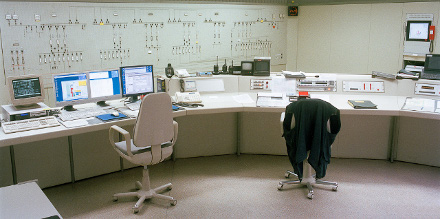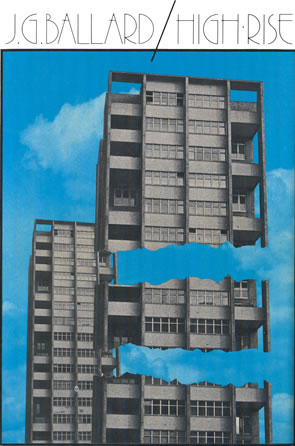Dave Young - Project Survey
SEEK, also known as BLOCKSWORLD - Nicolas Negroponte and the Architecture Machine Group
- "Seek" 1970 Nicholas Negroponte with Architecture Group Machine M.I.T. Originally shown at the "Software" exhibition, Curated by Jack Burnham for the Jewish Museum in New York 1970. This piece consisted of a Plexiglass environment full of small blocks and inhabited by gerbils, who continuously changed the position of the blocks. Following instructions programmed buy the authors the robotic arm automatically rearranged the blocks in a specific pattern.
- source: http://norgacs1projectone.blogspot.nl/2009/02/seek.html
The piece creates a 'closed system' - an entropic environment that is dismantled through the movements of the gerbils who inhabit it. It is a feedback loop: the gerbils knock down the blocks, and the robotic arm repairs the structure to some ideal pre-programmed by the Architecture Machine Group (AMG). To paraphrase [EcologyOfMind Gregory Bateson], animals are the only really unpredictable things in the world - the creation of a system that can rationalise this unpredictability is an attempt to ward off entropy, the state of immutable decay in the environment. The story goes that the society of Blocksworld did in fact descend into gerbil-cannibalism, proving once again that entropy prevails despite our best efforts to halt it.
The above source (although idiosyncratically translated from german to english) seems to state that the Architecture Machine Group at MIT were part of the "Laboratory of Urban Systems". I am curious to find out some other experiments made by this lab, I'll post them on this page if relevant.
Sources
- Curious imagery of gerbils and cubes => http://www.cyberneticians.com/slideshow/seek1.html
- Cybernetic Zoo article on SEEK with plenty of images of the AMG = > http://cyberneticzoo.com/?p=3794
- Another article about SEEK => http://www.projektklasse.de/html/personen/lehrende.html
At the Control Room - Patrick Raddatz
- According to a legend, the then newly elected president of the USA, Ronald Reagan, asked upon introduction to the White House: ‘Where is the War Room?’. At The Control Room is a visual study of work environments like Control and Observation Room, in which complex and integrated work processes are reduced to a few cues and movements and furthermore, in which work takes place on a highly abstract level. These work environments first appeaed in the heydays of industrialisation, their complexion always directly reflecting the positions of the workers and their superiors, the technological evolution and it’s contemporary formal principles. The photographs are showing rooms from different domains, they are not only showing the technological state of the art they allow for conclusions of the then valid aesthetical, corporative and social relation of mankind to it’s technology from the perspective of the industry and the workers.
- source: http://ion.li/projekte-projects/at-the-control-room
This photoseries is more related to a project from last year about fictional computer interfaces, but still bears some relevance to my current interests. The rooms are designed according to the logic of the systems they control. Architecture, which we can understand as a discipline interested in positioning people in space, converges with the systems ideology in these images, creating a dialog of control between the environment and the computer systems which inhabit it.
High Rise - J.G. Ballard
- "In several of your novels you have used a small community, the residents of a luxury housing development or a high-rise block, for example, as a microcosm with which to explore the fragility of civil society. Do you think that your preoccupation with social regression, de-evolution even, stems from your childhood experiences in the internment camp when you saw, first hand, how easily the veneer of civilisation could slip away?" "Yes, I think it does, although anyone who has experienced a war first hand knows that it completely overturns every conventional idea of what makes up day-to-day reality."
- source: An Investigative Spirit: Travis Elborough talks to J.G. Ballard, included in High Rise (2006) Harper Perennial)
High Rise examines a distinctly 20th century concept of organising society: the apartment tower block. In urban areas where real estate is at a minimum and/or highly valuable, the high rise offered the possibility of housing a highly concentrated population in a small footprint. Unsurprisingly, such tower blocks began to appear in the skylines of sprawling metropolises all over the world, providing housing for the working/middle/upper classes, sometimes all in the same building. As the high rise tower evolved alongside 20th century capitalism, the prejudices and idiosyncrasies of the economic system exerted themselves on the architectural structure itself. Those who pay the higher property prices would be rewarded with high-speed elevators, privileged views of the surrounding landscape, greater space and luxury amenities. Most of all, they would be afforded seclusion from the lower classes.
- "The worst curse of poverty was the lack of privacy; only the very rich or the very poor of the city could enjoy their summer vacations; the very rich, because they had private estates; the very poor, because they did not mind the feel and smell of one another's flesh." (Ayn Rand, The Fountainhead, p530-531)
In High Rise, the social relations among the residents become tense when the class boundaries imposed by the architectural structure begin to break down: the lower classes start to subtly invade the spaces of those who pay for the privilege of privacy. Ballard presents the tower not as a building woven into a dense metropolitan landscape, but as a lonely structure in an urban desert. The architect, like a deity, resides in the top floor of the building, affording himself a lavish sense of privacy. The physical stratification of social class within one structure only reinforces the divisions, eventually leading to the erosion of inhibition and the decent into ystopian tribalism. There are moments when the characters gaze longingly from their balconies at London city. You get the feeling that if the characters were to attempt to leave the high rise and walk to their view of civilisation, they would have to traverse an enormous desert of a carpark, and come to the realisation that civilisation itself is a mirage, it's true remnants now remaining within the high rise. The high rise as an architectural structure displays two sides of a microcosmic utopia - utopia both in the original sense of the word, meaning 'nowhere place', and in its adopted meaning of an 'ideal place'.
This book relates to my current research as it deals with the failure of a system designed to produce an ideal society. I am interested in drawing comparisons between High Rise and other failed models of social systems, such as the communes in the early 1970s in the United States.



